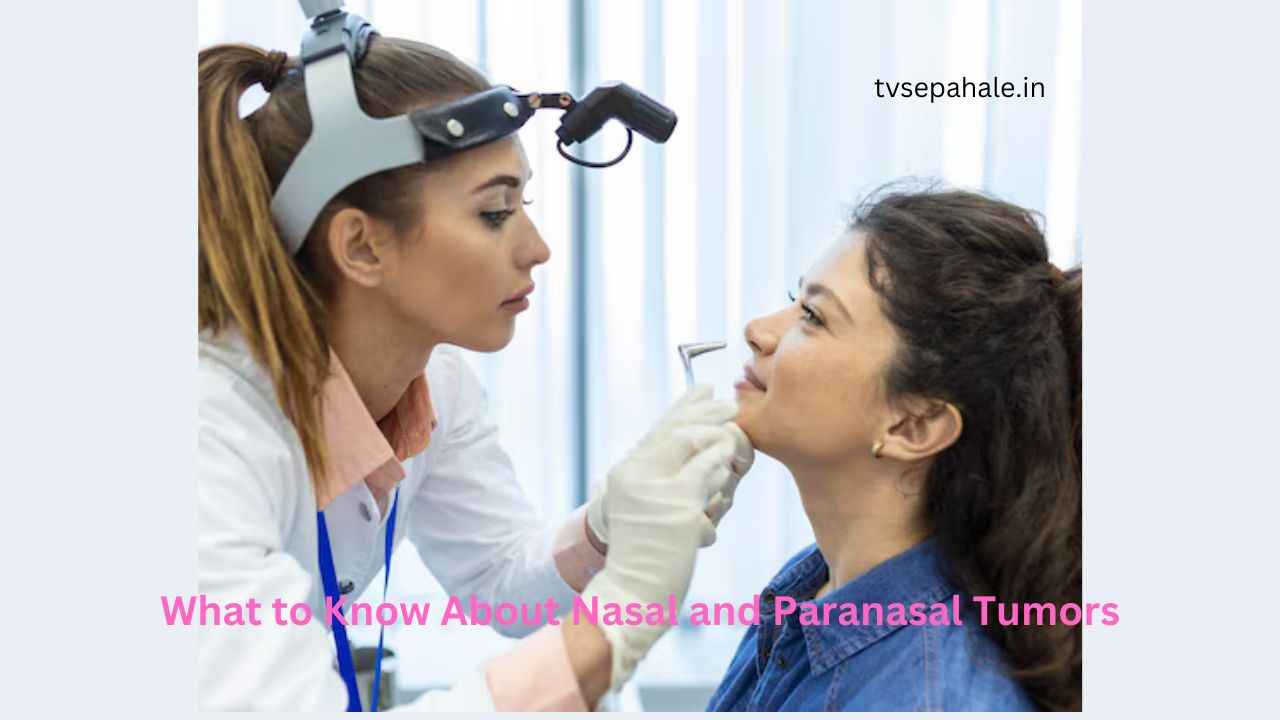Tumors of the nose and paranasal sinuses begin in and behind the nasal canal. Long-term exposure to smoke and other pollutants, such as textile dust, may raise your risk, albeit they are not very common.
These growths may be benign (noncancerous) or malignant (cancerous). If a benign tumor presses against your eye or blocks your nasal cavity, it can still create symptoms.
Although nasal and paranasal tumors are classified as “head and neck cancers,” they are frequently treated in a different way than other malignancies in this group. Surgery is the most common treatment for advanced malignancies, however, targeted medication therapy or immunotherapy may also be necessary.
Continue reading to find out more about paranasal and nasal tumors.
Understanding nasal and paranasal tumors
The nasal cavity, which permits air to travel from your nose to your throat, is where nasal cancers begin.
The paranasal sinuses are a collection of hollow spaces in your skull that serve several vital purposes, including enhancing voice quality, heating and humidifying the air, and providing insulation against temperature fluctuations. This is where paranasal malignancies originate.
Scarcely 3 percent of head and neck cancers are malignant tumors located in the sinuses or nasal canals. Squamous cell carcinoma is the most prevalent form of malignant tumor.
Usually, tumors are named either the kind of cells they originate in or the way the aberrant cells appear under a microscope.
Noncancerous paranasal or nasal tumors can manifest in several forms, such as:
- myoepithelium
- hemangioma
- hamartoma
- sinonasal papilloma
- oncocytoma
Cancerous tumors include:
- adenoid cystic carcinoma
- fibrosarcoma
- sarcoma
- chondrosarcoma
- olfactory neuroblastoma
- squamous cell carcinoma
- spindle cell carcinoma
- adenosquamous carcinoma
- rhabdomyosarcoma
- natural killer/T-cell lymphoma
- sinonasal undifferentiated carcinoma
Signs and symptoms
Typically, symptoms of paranasal and nasal tumors do not appear until they become large or spread to other tissues. Their symptoms are difficult to distinguish since many of them can resemble those of a sinus infection.
Among the symptoms and indicators are:
- pus drainage from your nose
- trouble smelling
- facial numbness or pain
- loose teeth or numbness around your teeth
- a noticeable lump inside your nose or palate
- watery eyes
- bulging of one eye
- vision loss
- persistent stuffy nose, often on one side
- pain above or below your eyes
- postnasal drip
- nosebleeds
- ear pain or pressure
- hearing loss
- headaches
- difficulty opening your mouth
- enlarged lymph nodes in your neck
Causes and risk factors
Approximately 80% of paranasal or nasal malignancies affect adults over the age of 55. In the US, they affect men around twice as frequently as women. Nasal tumors are more common in White people than Black people.
It appears that smoking raises the chance of squamous cell carcinoma, which is more common in paranasal or nasal cancers. Receiving radiation therapy for the face represents an additional risk factor.
Inhaling certain compounds present in certain work environments, such as the ones listed below, may also raise your risk:
- nickel and chromium
- mustard gas
- radium
- glues
- formaldehyde
- organic solvents
- wood dust from carpentry and wood-related industry
- textile dust
- leather dust
- flour
Diagnosis
Frequently, your doctor will begin your diagnosis by:
- performing a physical exam
- asking you about your symptoms
- considering your medical history
Your doctor will recommend you to an otolaryngologist, or ENT doctor if they think you could have a tumor. An ENT may examine your nose with an endoscope—a tube that inserts into your nose and contains a camera—or with a special light.
You might be given imaging tests like these:
- X-rays
- positron emission tomography (PET) scans
- computed tomography (CT) scans
- magnetic resonance imaging (MRI)
- bone scans
By taking a tiny sample of the suspected tissue and analyzing it in a lab, your doctor can confirm the diagnosis with a biopsy.
Survival rates and outlook
Physicians frequently use the 5-year relative survival rate to assess how a particular cancer type will fare. It shows the proportion of cancer patients who are still alive after five years as opposed to those who do not have the disease.
The 5-year relative survival rates for malignancies of the nasal cavity and paranasal sinus in the United States from 2012 to 2018 are shown below:
| Stage | 5-year relative survival rate |
|---|---|
| Localized | 86% |
| Regional | 52% |
| Distant | 43% |
| All stages | 59% |
Although these figures can offer you a general notion of what to anticipate, numerous additional factors impact your likelihood of surviving. Positive outlook-related factors include:
- younger age
- female sex
- better ability to carry out daily tasks
- tumors that are not extending into your skull’s base
- tumors that, when viewed under a microscope, can be excised without any cancer cells evident around their margins
- not smoking or drinking alcohol
Treatment
The primary treatment for malignancies in their early stages is surgery. Additionally, based on your subtype and stage, you might get:
- chemotherapy
- radiation therapy
- your surrounding lymph nodes are being removed
Your doctor might not be able to remove your cancer entirely through surgery if it is in a late stage. For certain types of malignancies, you could get:
- chemotherapy
- immunotherapy
- targeted therapy drugs
- radiation therapy
The bottom line
In the early stages, nasal and paranasal tumors frequently don’t cause any symptoms and are uncommon. When they manifest, the symptoms often resemble a sinus infection.
Among the most popular types of treatment include radiation therapy, chemotherapy, and surgery. Immunotherapy and tailored medication therapy are two examples of more recent treatments available to patients with advanced cancer.
